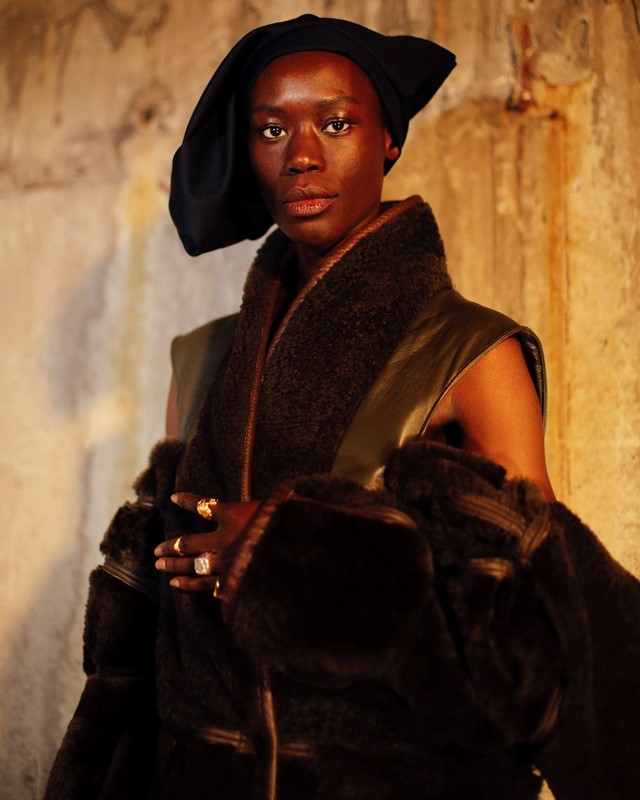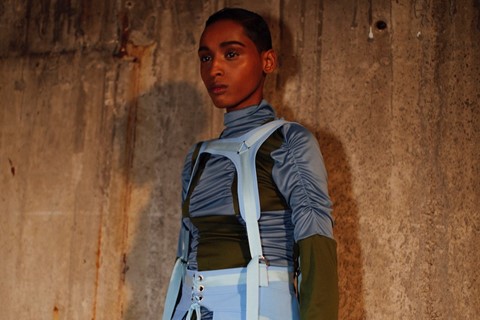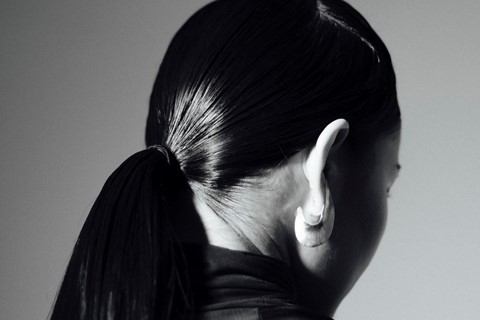Richard Malone’s Autumn/Winter 2020 collection, shown at London Fashion Week, was one of the designer’s most desirable, and sustainable, yet
“Dominance, compulsion, desire,” were the words Richard Malone offered to describe his Autumn/Winter 2020 collection, shown in London on Friday afternoon. They are words which feel particularly apt for designers of womenswear at our current moment: how do you create clothes which suggest power, but still elicit the kind of longing desire which makes a woman part with her money?
Malone finds himself well-placed to answer this question. Since eschewing the traditional wholesale model, he now works directly with the women who wear his clothing, selling either through private orders or in one-on-one consultations. It makes the process more intimate than most: for his loyal clients, clothing is tweaked to the contours of their bodies, to their personal wants and needs. He approaches his runway collections in a similarly holistic manner. “I don’t think there is much to clothes, until people are in them,” he previously told AnOther’s Alexander Fury, with the run-up to the show a “massive brainstorm, refining, refining, refining,” as he listens to the comments and notes from his majority women team (which includes AnOther Magazine’s senior fashion editor, Nell Kalonji, who styles the show).
Here, that sense of desire was elucidated more literally than previous collections – in the notes he talked about drawing sight lines to the “erogenous zones”, those which usually suggest “fertility, youth, submission”, and instilling them with the sort of power the same areas on a man’s body traditionally represent. He did so with belting and straps: whether signature fit-and-flare suiting, cinched at the waist with a belt, or the harness-like constructions which sat over sheer ruched T-shirts or dresses, suggesting power, rather than restraint. Knitwear – part of Malone’s entrance to the Woolmark Prize, the winner of which will be announced later today – had a similarly harness-like construction. The collection ended with a series of imaginative, expansive ruched gowns, with sculptural proportions. Malone called these abstractions indicative of “the essential act of ‘just making’”.
But Malone is also well aware that desire is now complicated by the environmental impact of making clothing – no longer can fashion responsibly encourage the kind of rampant consumerism it once did. Malone has long been at the forefront of sustainability: here, he incorporated those practices with new panache and invention. Dyes were all plant-based and organic (one deep-green sweater was dyed with lotus leaves). Leather, used for the first time, was repurposed and will be only available made-to-order. Jewellery, created by Rosh Mahtani of Alighieri, was created from pieces which already existed in her archive. Responsibility also extended to the people who make his clothes, too: his tailors and pattern cutters receive £25 per hour, minimum, while abroad, dyers and weavers receive over four times the fair-trade average. Such commitments are proof not only of the designer’s own pragmatism, but also a pertinent point to the industry at large: if he can do it, why can’t they?






